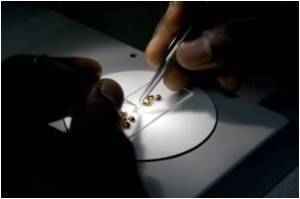Study conducted by researchers from John Hopkins University has shed light on why some breast cancer cells become resistant to the anti-cancer effects of the drug tamoxifen.

Scientists have long known that breast cancers are either estrogen-receptor positive or estrogen-receptor negative. The positive subset, generally associated with better outcomes for patients, is sensitive to the drug tamoxifen, which blunts aggressive tumor growth through estrogen receptor inhibition, according to Zachary E. Stine, the research team's lead author and a postdoctoral fellow working in the McKusick-Nathans Institute of Genetic Medicine, Johns Hopkins University School of Medicine.
Used for decades to prevent and treat breast tumors that kill about 40,000 women a year, tamoxifen works on some types of breast cancers by interfering with the activity of estrogen. However, resistance to the drug frequently develops over time, and previous experiments by other laboratories have shown that RET plays some role in either altering resistance or maintaining it.
Thus, the Hopkins scientists focused on RET, searching for pieces of DNA in the vicinity of that gene that had the potential, when combined with estrogen, to act as switches controlling the amount of protein product RET manufactures.
After identifying 10 sites in the RET locus that bind with estrogen receptor alpha, the investigators cloned the DNA sequences in those areas, then attached to each a piece of genetic material responsible for producing luciferase, an enzyme that causes the luminescent glow of a firefly. This lab product was then put inside human breast cancer cells in a dish and exposed to estrogen. Two of the 10 sequences lit up much more brightly than the others, revealing increased activity by the RET gene in response to estrogen.
"Those two sequences clearly are genetic hubs for the dialing up and dialing down of RET activity in response to estrogen," says Andrew McCallion, Ph.D., an associate professor in the McKusick-Nathans Institute of Genetic Medicine, and corresponding author on the study.
Advertisement
The investigators also found that when they put estrogen and retinoic acid together in breast cancer cells in culture, the increased activity of RET was much greater compared to either estrogen or retinoic acid alone.
Advertisement
Source-Eurekalert















